Published in 2015 by The Rosen Publishing Group, Inc. 29 East 21st Street, New York, NY 10010
Copyright 2015 by The Rosen Publishing Group, Inc.
First Edition
All rights reserved. No part of this book may be reproduced in any form without permission in writing from the publisher, except by a reviewer.
Library of Congress Cataloging-in-Publication Data
Borisovna, Gabrielle, author.
Carl Sagan/Gabrielle Borisovna.
pages cm.(Great science writers)
Includes bibliographical references and index.
ISBN 978-1-4777-7681-0 (library bound)
1. Sagan, Carl, 1934-1996Juvenile literature. 2. AstronomersUnited StatesBiographyJuvenile literature. I. Title.
QB36.S15B67 2001 520.92dc23 [B]
2013039272
Manufactured in the United States of America
Contents
I t all began with the stars. In 1939, in Brooklyn, there lived a bright five-year-old boy named Carl Sagan. Like all children, he had questions about the world around him. In particular, he was curious about the stars. The boy asked his friends and neighbors to explain: What are the stars? How can they shine so brightly? But he found their vague answers unconvincing. So he went home and asked his mother to tell him about the stars. She told him to go to the library and find out for himself.
When Sagan asked the librarian for a book about stars, she brought him a book about Hollywood actors. The serious young boy was embarrassed and explained that those werent the types of stars he was interested in.
Finally young Sagan got his hands on a childrens book about stars. He read that the sun is a star, the center of our solar system. The other stars are massive celestial fireballs, far larger than Earth, many much larger than the sun, but so far away that, to us, they look like tiny points of light in the great dark of the sky.
The boys imagination caught fire as he realized for the very first time the immensity of spacethe sheer scale of the universe. He never forgot the breathtaking grandeur of that vision.
Fast-forward several decades, to 1990. Carl Sagan, now a famous astronomer and author, is an adviser to NASAs space program. He has been involved for years in helping to design the experiments carried out by manned and robotic space missions.
As the Voyager probe approaches the outer reaches of the solar system, Sagan urges his colleagues at NASA to have the probe turn its camera around and photograph Earth as it appears from approximately 3.7 billion miles away. Earth is barely visible, a tiny pale blue dot in a great black night.
The photograph doesnt give NASAs scientists any new data about space or about Earth. But it serves another purpose: to communicate Sagans childhood vision of the great vastness of space. (Sagans inspiring words about that historic photograph are discussed later.)
As one of historys great science writers, Sagan had a passion for inspiring ordinary people to marvel at the infinite frontier of space and the practical wonders of science. This is his story.
C arl Sagan was born in Brooklyn, New York, in 1934. His parents were both from Jewish immigrant families who fled hunger, prejudice, and persecution in eastern Europe.
SAMUEL SAGAN
Carls father, Samuel Sagan, was born in the eastern European region known as the Pale of Settlement, often referred to as the Pale, the only area of Imperial Russia where Jews were allowed to settle permanently. During the late nineteenth and early twentieth centuries, many Jews left the Pale to escape poverty and anti-Semitism and settled in America.
The Sagan family came to America in 1910, when Samuel was five years old. When he was old enough to work, Sam went to work for his uncle George at the New York Girl Coat Company. Sam started out on the factory floor, but he was eventually promoted to become a manager. Sam was a gentle and good-humored man, who easily connected with othersespecially his future wife, Rachel Molly Gruber.
RACHEL SAGAN
Rachels parents came to New York City from the Austro-Hungarian Empire. A family rumor stated that Rachels father, Leib, had run off to America after killing an anti-Semite. When Leib had earned enough money to send for his wife, Chaiya, she joined him in the United States. In 1907, the couple had a daughter, Rachel, but Chaiya died giving birth to her next child. Unable to handle his young daughter alone, Leib sent Rachel back to his relatives in Austria. Before long, they sent young Rachel right back to New York.
Unfortunately, Leib had remarried, and his new wife couldnt stand Rachel, who had to grow up quickly. Rachel developed a sharp tongue and learned how to fight for what she wanted. She also learned how to be loyal to those who truly loved herlike Samuel Sagan.
FAMILY LIFE
After a whirlwind courtship, Rachel and Sam were married. Their firstborn, Carl, was born on November 9, 1934. Starved for love as a child, Rachel poured her whole heart into raising her son. She pushed him, cheered him on, bragged about him, and was incredibly proud of him. In fact, Rachel and Carl were so close that many other women in Carls life found themselves intimidated by his mother. Sam and Rachel had a second child, Carol Cari Mae, in 1941.
Rachel was a charismatic, intelligent, ambitious, and complicated woman. She had an analytical mind and taught her children to ask tough questions about the world around them. She could be hypercritical, a perfectionist. Carl grew up a very serious, well-behaved child who followed his parents rules without complaint.
FALLING IN LOVE WITH LEARNING
During the early decades of the twentieth century, many Jewish immigrants believed education was the key to unlocking opportunity in the new world. Carls parents pushed him to excel in school, and he did not disappoint them. Unlike previous generations of his family, Carl would have the chance to become anything he wanted to be.
Carls parents encouraged his interest in mathematics and science. Although they didnt have a lot of money, they bought him toy chemistry sets and electric trains. They encouraged his interest in dinosaurs, outer space, and ancient myths and legends.
Young Carl fell in love with science fiction and comics. He read books by authors like Edgar Rice Burroughs, famous for his tales of adventure set in outer space. Young Sagans imagination was particularly sparked by tales of contact with extraterrestrials.



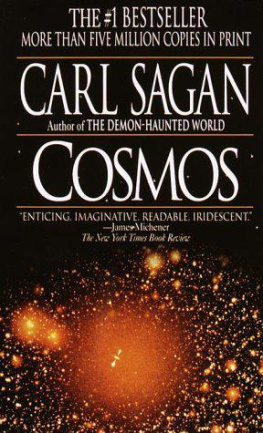
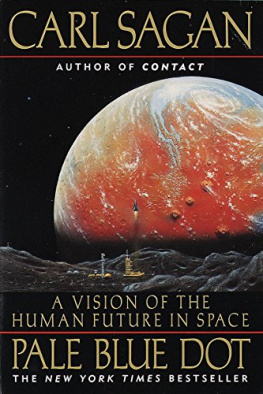
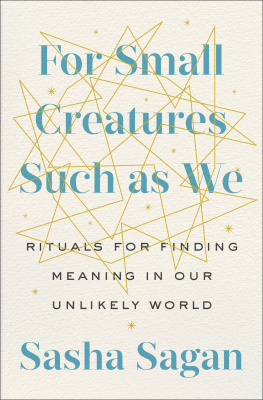
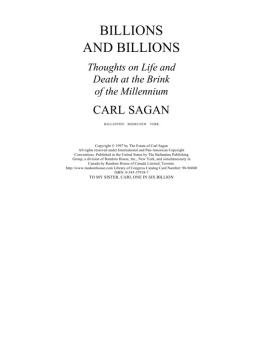
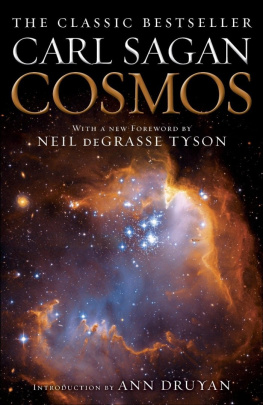
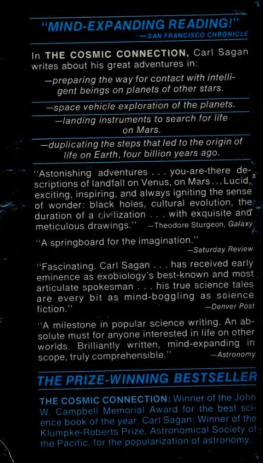

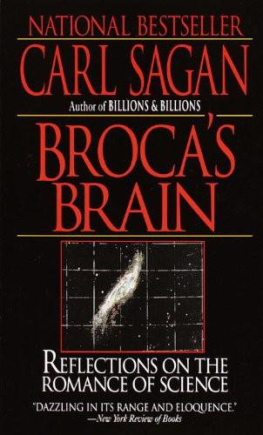




.jpg)
.jpg)

.jpg)
.jpg)